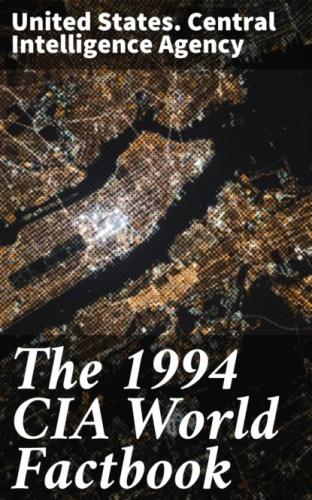GDP. Timber accounted for about 26% of export earnings and the diamond
industry for 54%. Important constraints to economic development
include the CAR's landlocked position, a poor transportation system,
and a weak human resource base. Multilateral and bilateral development
assistance, particularly from France, plays a major role in providing
capital for new investment.
National product:
GDP - purchasing power equivalent - $2.5 billion (1993 est.)
National product real growth rate:
−3% (1990 est.)
National product per capita:
$800 (1993 est.)
Inflation rate (consumer prices):
−3% (1990 est.)
Unemployment rate:
30% (1988 est.) in Bangui
Budget:
revenues:
$175 million
expenditures:
$312 million, including capital expenditures of $122 million (1991
est.)
Exports:
$123.5 million (f.o.b.1992)
commodities:
diamonds, cotton, coffee, timber, tobacco
partners:
France, Belgium, Italy, Japan, US
Imports:
$165.1 million (f.o.b.1992)
commodities:
food, textiles, petroleum products, machinery, electrical equipment,
motor vehicles, chemicals, pharmaceuticals, consumer goods, industrial
products
partners:
France, other EC countries, Japan, Algeria
External debt:
$859 million (1991)
Industrial production:
growth rate 4% (1990 est.); accounts for 14% of GDP
Electricity:
capacity:
40,000 kW
production:
95 million kWh
consumption per capita:
30 kWh (1991)
Industries:
diamond mining, sawmills, breweries, textiles, footwear, assembly of
bicycles and motorcycles
Agriculture:
accounts for 42% of GDP; self-sufficient in food production except for
grain; commercial crops - cotton, coffee, tobacco, timber; food crops
- manioc, yams, millet, corn, bananas
Economic aid:
recipient:
US commitments, including Ex-Im (FY70–90), $52 million; Western
(non-US) countries, ODA and OOF bilateral commitments (1970–90), $1.6
billion; OPEC bilateral aid (1979–89), $6 million; Communist countries
(1970–89), $38 million
Currency:
1 CFA franc (CFAF) = 100 centimes
Exchange rates:
Communaute Financiere Africaine francs (CFAF) per US$1 - 592.05
(January 1994), 283.16 (1993), 264.69 (1992), 282.11 (1991), 272.26
(1990), 319.01 (1989)
note:
beginning 12 January 1994, the CFA franc was devalued to CFAF 100 per
French franc from CFAF 50 at which it had been fixed since 1948
Fiscal year:
calendar year
@Central African Republic, Communications
Highways:
total:
22,000 km
paved:
bituminous 458 km
unpaved:
improved earth 10,542 km; unimproved earth 11,000 km
Inland waterways:
800 km; traditional trade carried on by means of shallow-draft
dugouts; Oubangui is the most important river
Airports:
total:
65
usable:
51
with permanent-surface runways:
3
with runways over 3,659 m:
0
with runways 2,440–3,659 m:
2
with runways 1,220–2,439 m:
20
Telecommunications:
fair system; network relies primarily on radio relay links, with
low-capacity, low-powered radiocommunication also used; broadcast
stations - 1 AM, 1 FM, 1 TV; 1 Atlantic Ocean INTELSAT earth station
@Central African Republic, Defense Forces
Branches:
Central African Army (including Republican Guard), Air Force, National
Gendarmerie, Police Force
Manpower availability:
males age 15–49 701,728; fit for military service 367,264
Defense expenditures:
exchange rate conversion - $23 million, 1.8% of GDP (1989 est.)
@Chad, Geography
Location:
Central Africa, between the Central African Republic and Libya
Map references:
Africa, Standard Time Zones of the World
Area:
total area:
1.284 million sq km
land area:
1,259,200 sq km
comparative area:
slightly more than three times the size of California
Land boundaries:
total 5,968 km, Cameroon 1,094 km, Central African Republic 1,197 km,
Libya 1,055 km, Niger 1,175 km, Nigeria 87 km, Sudan 1,360 km
Coastline:
0 km (landlocked)
Maritime claims:
none; landlocked
International disputes:
the International Court of Justice (ICJ) ruled in February 1994 that
the 100,000 sq km Aozou Strip between Chad and Libya belongs to Chad,
and that Libya must withdraw from it by 31 May 1994; Libya had
withdrawn its forces in response to the ICJ ruling, but as of June
1994 still maintained an airfield in the disputed area; demarcation of
international boundaries in Lake Chad, the lack of
